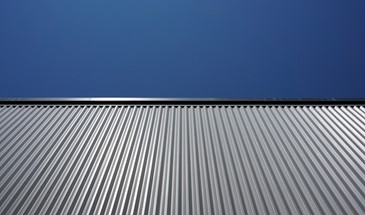In the wake of the COVID-19 pandemic, the focus on energy savings and sustainability is larger than ever; and roofing systems are not an exception.
Green roofs demonstrate advantages such as energy-saving, indoor thermal comfort, rainwater management, air pollution reduction, and urban heat island mitigation. Their benefits are dependent on the use of primary energy, natural resources, or raw materials used in the construction.
But how can one make their roof replacement sustainable?
Gasper Roofing provides a few strategies that boost energy efficiency, reduce environmental impact, and contribute to a healthier, more sustainable living, or commercial space.
Redefining Roofs: 5 Sustainable Roofing Strategies
Perform Regular Roof Maintenance
A well-maintained roof is a “healthy” roof.
But why should anyone go through the hassle of maintaining and repairing a roof when they can just replace it? Because constant reroofing is neither cost-effective nor environmentally friendly.
That’s why regular maintenance is essential – it retains the roof’s efficiency of insulation which leads to reduced energy consumption and lower utility bills. Regular inspections can also detect any defects or damages, which should be addressed promptly.
It’s important to keep in mind that the more years that a roof lasts, the less landfill waste there is, as the National Roofing Contractors Association (NRCA) reported that over 8 million tons of roofing waste is dumped into U.S. landfills annually.
Install Solar Panels
Although a little pricey upon installation, solar panels have become a popular and effective way to help reduce energy costs. Because solar panels use renewable energy, not only do they provide cost savings but also reduce the carbon footprint of the home.
It’s important to clean the surface of the panels regularly as the build-up of environmental debris decreases their output of energy. According to The National Renewable Energy Laboratory (NREL), some areas showed losses as high as 25 percent.
Consider Daylighting Skylights
Lighting consumes a lot of electricity, so another roofing strategy that can help maximize energy savings is the addition of daylighting skylights. These lights reduce the amount of artificial light required inside a home or commercial building.
Large homes or offices with plenty of overhead lighting can benefit from daylighting skylights.

Preserve Insulation Efficiency
Insulation is considered as the best way to capture roof-related energy savings. Without proper rof insulation, heat enters in the summer and escapes in winter, making one’s HVAC systems work harder.
For better thermal efficiency, it’s best to address leaks right away and to keep people off the roof as foot traffic compresses insulation.
Apply Roof Coating
Roofs are always exposed to elements such as UV light, heat, water, and moisture, all of which accelerate deterioration and lead to the chemical degradation of the roof’s membrane. Provide an extra layer of protection by applying roof coating or installing a new roof over the old one.
Not only will this help improve a home’s energy efficiency but is also a sustainable and eco-friendly choice.
As everyone adapts to new norms after a pandemic, it’s best to focus on practices that promote energy savings and sustainability so that we can all enjoy a healthier way of life that doesn’t hurt the environment.
